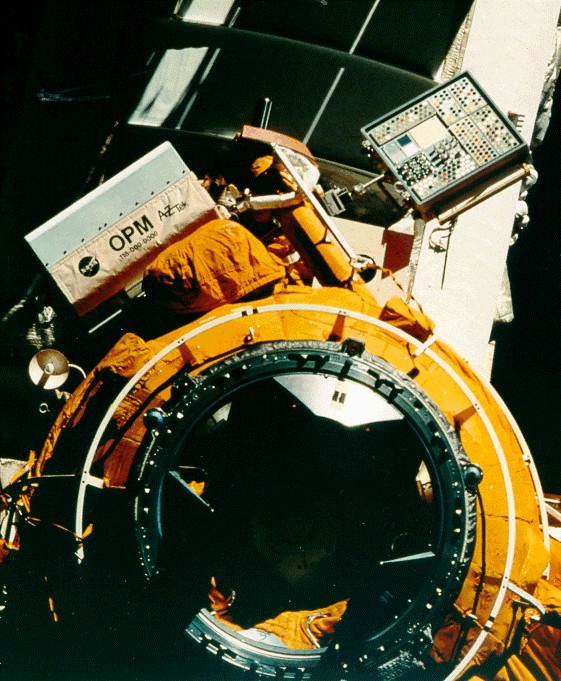Optical Properties Monitor (OPM)

Optical Properties Monitor (OPM)
OPM and the Space Portable SpectroReflectometer (SPSR) were developed under the protoflight concept in partnership with NASA, flown aboard the Space Shuttle and used on the exterior of the Russian Mir Space Station. The OPM was placed on the exterior of MIR during the first joint US/Russian spacewalk. These very successful programs included design, development testing, and verification of this hardware and included integrating the requirements for hardware performance, Shuttle, SpaceHab, and Mir payloads, and Extravehicular Activities (EVA) while maintaining a cost-effective program. Data from OPM and SPSR are still being used today (See System Report (pdf 12 MB) and Science Report (pdf 16MB) for detailed reports). The need to monitor the optical properties of materials in space is still very important. AZ Technology continues to be involved with experiments on Materials International Space Station Experiment (MISSE). See also MISSE Summary Report (pdf 540KB).
What does a “materials exposure experiment” do? The obvious answer is that it exposes materials to space. But the OPM did much more than that. It had the capability to take measurements on the materials being exposed while they were still out in the space vacuum, without having to bring them back to Earth and risk their being contaminated by handling and exposure to atmosphere and gravity.
The OPM monitored the space environment in its vicinity, so it could ascertain what the samples were actually being exposed to. And it had the ability to be controlled from Earth, so that the experiment could be changed on the fly when unusual results were seen. From April to December 1997, the OPM, in its position on the outside of the Mir’s Space Shuttle docking module, monitored the space environment around Mir and took measurements on material samples.
For more details on the OPM, see: Overview, More Details, Design, Science, Partners.
The NASA and AZ Technology1 personnel who made the OPM mission a success:
Principal Investigator – Donald R. Wilkes, AZ Technology
Co-Investigator – Dr. Jean Bennett, AZ Technology
Co-Investigator – Edgar R. Miller, AZ Technology
Project Manager – R.M. Baggett, NASA/MSFC
Project Manager – D.W. Cockrell, NASA/MSFC
Project Manager – S.R. Davis, NASA/MSFC
Project Manager – G.E. Thomas, NASA/MSFC
Project Scientist – Jim Zwiener, NASA/MSFC
Chief Engineer – Leigh Hummer, AZ Technology
Science Team – David Crandall, John Harchanko and R.M. Mell (AZ Technology)
Science Team – J.B. Hadaway and J.C. Gregory (U. Alabama, Huntsville)
Science Team – R.R. Kamenetzky (NASA/MSFC)
| John Taylor | Ed Fitzgerald | Erich Engler | Richard Saik |
| David Clem | Jared Bell | Kraig Behel | Craig Schmitz |
| Pamela Harlin | Clifford Kiley | Stan Woods | Becky Lambert |
| LaWanda Hynum | Tom Smiley | Glenn Fountain | Robin Moore |
| Anita Williams | Richard Mell | Jim Chamberlain | Vince Lamberti |
| Debra Archer | Howard Dunn | David Cornutt | Carolyn Cunningham |
| Lesley Walker | Steve Jones | Kritchai Kuntakom | Janeen Cooke |
| David Avery | Amy Alvis | John Simms | Jim Offenbecher |
| Glenn James | Joseph Scott | Rodney Brand | Penny Williams |
| Chad Seymour | Beth Fitzsimmons | Matt Bolling | Janet Rayl |
| Ken King | David O’Neil | Randy Thompson |
1The late Donald R. Wilkes was the founder of AZ Technology.
Other current employees are: David Crandall, Executive Vice-President; Jim Zwiener, Coatings and Materials Manager; Glenn James, Instruments; Amy Alvis, Materials and Coatings; and Steve Jones, Materials and Coatings.